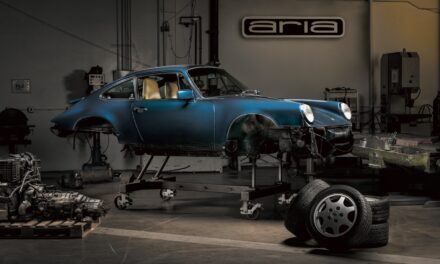Silicon Valley startup Navier is building technology to increase the efficiency of small powerboats while ensuring zero emissions and superior ride performance. To make this vision a reality, co-founders Sampriti Bhattacharyya, CEO, and Reo Baird, CTO, have signed with Lyman-Morse shipyard in Camden, MN, to build the first-year production for the Navier 27, an all-electric, hydrofoil, performance boat outfitted with an advanced autopilot system.
Navier is producing a limited number of boats in its first year under the Pioneer Program. As the startup focused on technology development for Navier 27, it wanted to partner with an innovative and capable U.S. shipyard experienced in working with high-tech, carbon composite boats and Lyman-Morse fit the bill. As a bonus, the shipyard’s location is in an up-and-coming tech hub in Maine with a strong boat-building heritage.
“Very few shipyards have the extensive experience, in-house capabilities, and deep interest in high-tech projects as Lyman-Morse,” said Bhattacharyya. “Plus, Maine has a long history in boat building, which makes it a special place to build Navier 27.”
The Navier 27 is a 27-ft-long foiling performance vessel with an 8 ft, 6 in beam and a 10-person capacity. It is capable of a range exceeding 75 nmi range at 20 kt in its standard configuration under electric propulsion. Its two 50-kW electric motors enable foiling speeds of 18-30+ kt.
When it launches during the Fort Lauderdale International Boat Show in October 2022, the company says it will be the longest-range electric boat in the world. First-year customer deliveries will begin in Q2 2023.
“What has me—and all of us at Lyman-Morse—excited about the partnership with Navier is that we are developing something that is cutting-edge and certain to be the future of yachting in this type of market,” said Drew Lyman, President and Owner of Lyman-Morse. “To build a carbon-fiber, foiling, all-electric boat fits well with what we do at Lyman-Morse, plus it’s a boatbuilder’s dream project.”
Lyman-Morse will combine the technology, mechanics, construction, and manufacturing of the boat.
“Lyman-Morse is outfitted with the best machines, tools, and technologies that will help Navier reach production goals,” said Bhattacharyya. “Drew has enthusiasm for our vision, and his team truly cares about sustainability.”
Spearheaded by two MIT engineers, Navier is teaming up with the most talented minds to build the boat. In July 2021, the startup announced that America’s Cup engineer and foiling expert, Paul Bieker, is leading its naval architecture and mechanical design by contributing his knowledge in hydrofoil configuration and foil optimization.
The boat is intended for fishing, water skiing, family outings, or service as a unique yacht tender. Its clean styling is meant to combine strong and classic lines with a contemporary luxury feel. The boat comes in two variants: cabin, for all-season utility, and hardtop, for warm-weather fun.
Its hydrofoils provide a smooth ride and sporty drive, enabled by aerospace stabilization technology. The boat is engineered to fly over 3-4 ft (0.9-1.2 m) seas that would otherwise cause uncomfortable pounding and is 90% more efficient than a traditional 27-ft boat. The foils are retracted for beaching and shallow water.
The Navier 27 can be connected anywhere in the world via smartphone. It is equipped with an advanced assistive autopilot, with future over-the-air software updates planned to enable full self-driving capabilities. For the novice boater, it delivers an easy, stress-free operation. For the experienced captain, the system is a dedicated, alert, “first mate,” reducing operator load while he/she keeps full control.
Initial features are assisted docking, with a precise sensor-assisted joystick free of delays typical in gasoline boats. Advanced autopilot is for speed and course control, whether station-keeping, trolling, or cruising. Hazard alert alerts operators of danger before it’s too late. Future over-the-air updates will deliver expanded capabilities such as automated docking and active collision avoidance.
- Navier 27 all-electric, hydrofoil, performance vessel by day.
- Navier 27 all-electric, hydrofoil, performance vessel by night.
- Sampriti Bhattacharyya is a co-founder and CEO of Navier.
- Navier 27 comes in two configurations.
- Navier 27 on the beach.
- Navier 27 from above.
- Navier 27 hydrofoils.
- Navier 27 hydrofoils.




























































































